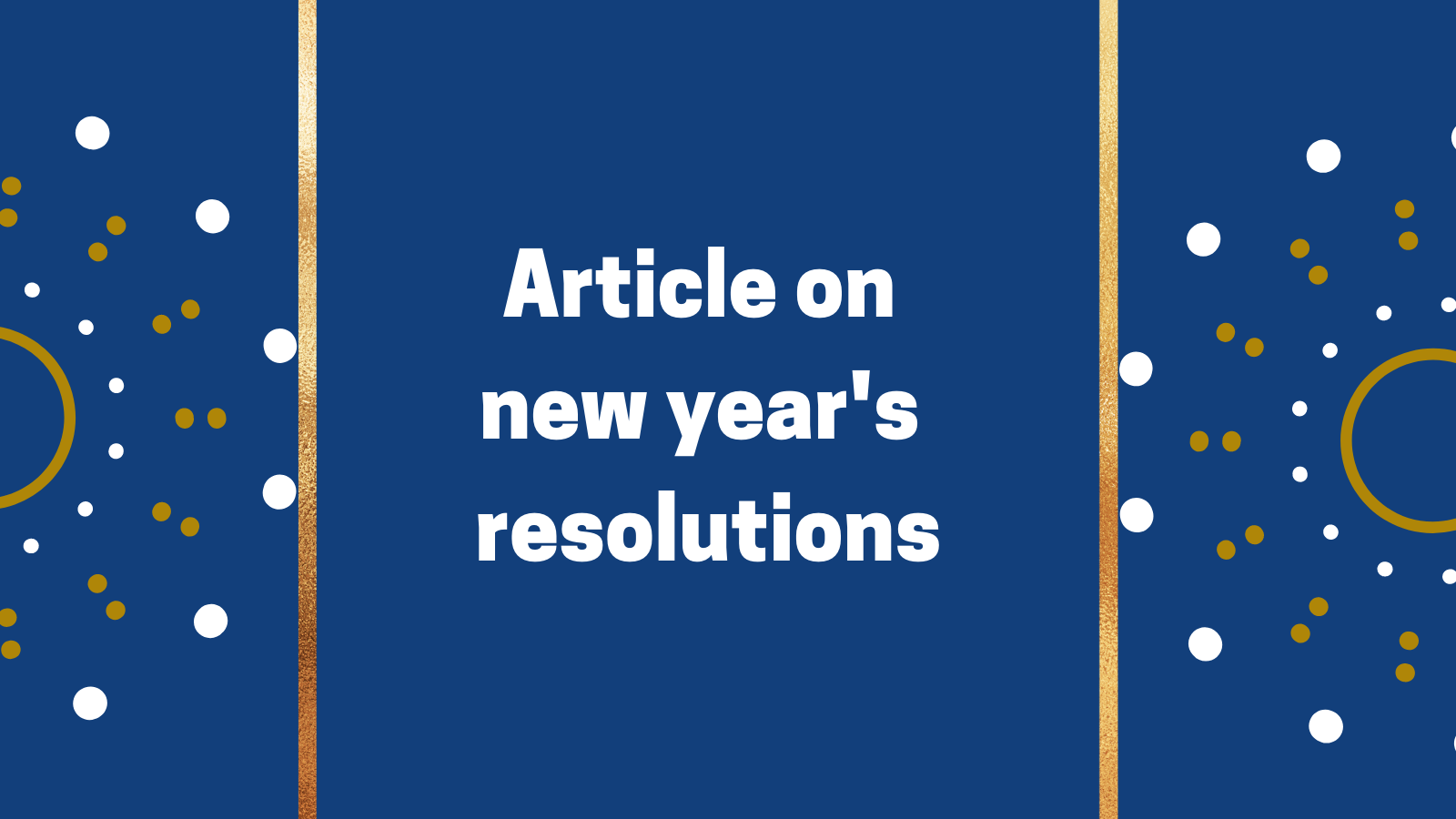This article was originally published on BGMT.nl and you can find it here.
New Year’s Eve has passed and we have entered 2021 full of hope for ourselves and the world. Many people usually take this time to think of their new year’s resolutions in order to set the tone for the upcoming year. Setting such resolutions is a daunting task for some and often times, the immensity of the goal contributes to that fear. The prevalent belief that everyone should have high expectations and standards for the year ahead, places immense pressure on each one of us.
Nonetheless, resolutions should not be considered as a burdensome task, but more as smaller attainable goals that could help us improve. Resolutions that work for us.
How do we create such resolutions? Keep reading to find out the 3 most important steps to make the process easier and achievable. Additionally, you will also discover my personal experiences with resolution development.
Defining New Year’s Resolutions

Important Disclaimer:
You need to remember that they are not laws, but rather pointers for progress and self-improvement. Even if you don’t achieve them perfectly, it matters that you were willing to try, and willing to put the effort in trying. That to me is reason enough to create resolutions.
What are New Year’s Resolutions
Firstly, we need to briefly mention what these resolutions are. In the past, after 5 years of goal-setting and 2 years of bullet journaling, I can say that I am warming up to them. Initially, I tried to write down resolutions such as “be happier” and “spend less”. All of these are amazing goals, but I soon lost interest in them as it seemed very hard to do.
I had not given myself the opportunity to achieve these resolutions because I was looking at them as mere guides. Guides to habit development. I thought that after all, habits need around 66 days to be built and ingrained in us.
Here are a few steps that I should have taken:
1. Customize your resolutions
Okay, you are in. You want to make 2021 resolutions. So you start from customizing them to you and your current situation. One reason why resolutions fail is that they revolve around societal or other external expectations about yourself.
At the bare minimum, you should be honest to yourself on what you need to work on. Why stop there? Don’t only make them about yourself, consider the others around you. How about giving back to your local community or saying “thank you” more. Make the goals beneficial to others and not because of external pressure, but because you want to.
The time factor
Another reason why resolutions are so hard to keep is their 1-year time stamp. Shorter time frames allow for focussed goal-targetting.
Consider making resolutions weekly or monthly. For instance, if your resolution is to become a vegetarian, start with 3 to 4 days of vegetarian food. This makes the resolution more possible. By breaking down these goals, you can more closely monitor your progress. This is harder to do with a longer term goal. You can also view your results, and build on past achievements no matter their size.
2. Simplify and categorize

After personalizing your resolutions, it’s time to simplify and categorize them.
Each year, I use my bullet journal to write out a few aspects of my life that would benefit from resolution-making. These can be career goals, personal development, relationships, finance, fitness, etc. Personally, I choose to write out my resolutions in pencil because it makes them less permanent and I can adjust them as the time passes by. As I said, they are not laws, they are merely guides.
Simplification is important because the less grand, the more attainable they are. Trust me, achieving your resolutions feels like tangible progress. Even a goal such as “drinking 1.5L of water every day” can be a new year’s resolution.
3. State the how
Now that you have a clearer vision of your simple and personal resolutions, it’s time state how you will actually achieve them. This step is probably the most important one. It makes new year’s more grounded rather than ethereal and impossible.
For instance, you could easily say you want to learn the Dutch language by doing 2 hours of work every week, from specific textbooks or applications. This does not seem like a lot, especially if you consider time for a break in between the weeks of studying.
One method that I recently discovered and could be useful is the WOOP method. After coming up with your resolution, a.k.a. ‘wish’, work out the possible outcomes and obstacles as part of your plan.
Writing your wishes down is much easier than just saying them out loud. Try it out and let me know how it goes in the comments below!
…..
Now that you have learned how to set new year’s resolutions, you should adapt these tips to your own liking. You do not have to set resolutions but if you do, remember to focus on enjoying the process of self-improvement. Good luck!

If your resolution is to get a driver’s license in the Netherlands, check out this previous article on our site. Maybe you want to explore the world of podcast as a new 2021 goal? Click here for interesting podcasts based in Rotterdam.

